Products
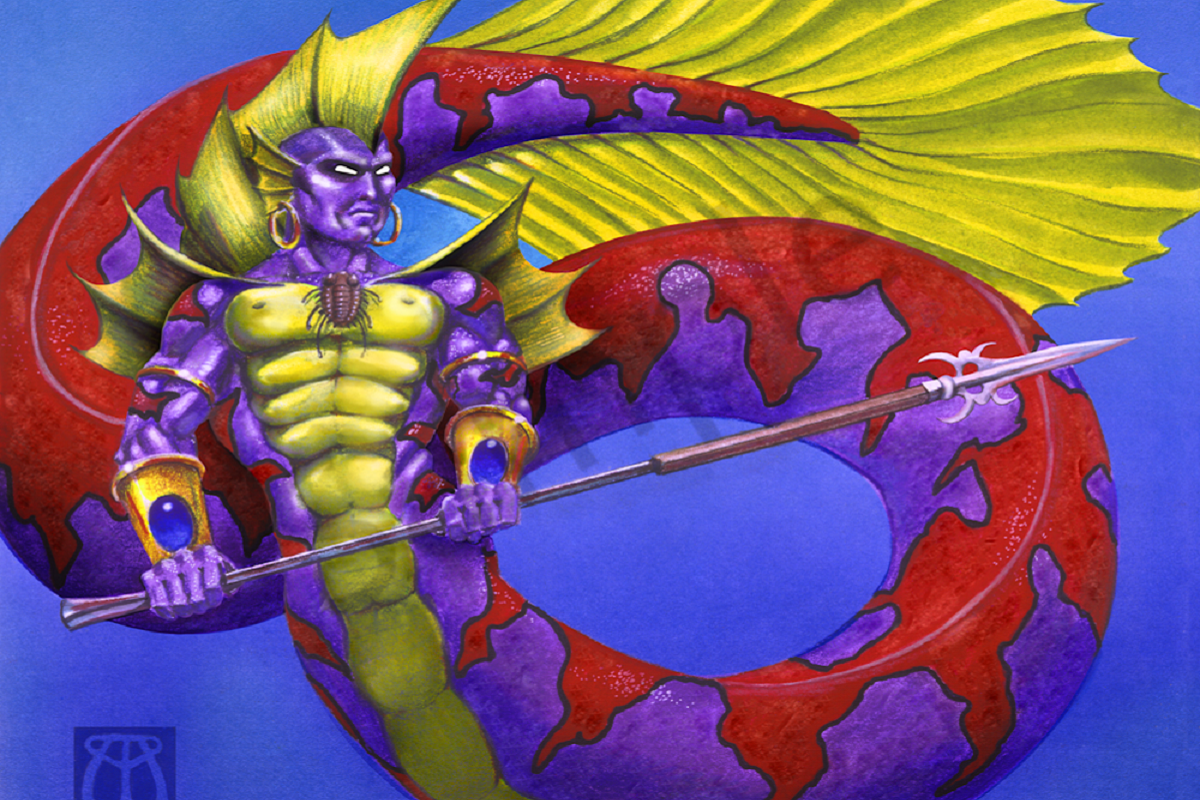
A 10 on the Beeble Scale: The Lords and Minions of Never Returning Creature Types
January 24, 2024 6 min read 0 Comments
In the first part of this two-part feature, we explored the Beeble Scale, and its namesake creature type. The Beeble scale ranges from 1-10 with 1 being creature types that are iconic or integral to the game and that will definitely return and 10 being creature types that will never return. The namesake creature type Beeble, is one of three creature types that rate a 10 on the scale. This week, we look at the two other creature types, including one that was retired from the game of Magic entirely.
The Lords of Magic
The creature type Lord had been with the game since Limited Edition Alpha, but really got in gear with changes made to the core set in Revised Edition. In Revised, four creatures from the core set, Lord of Atlantis, Zombie Master, Goblin King, and Keldon Warlord, all had their creature types errataed to Lord.
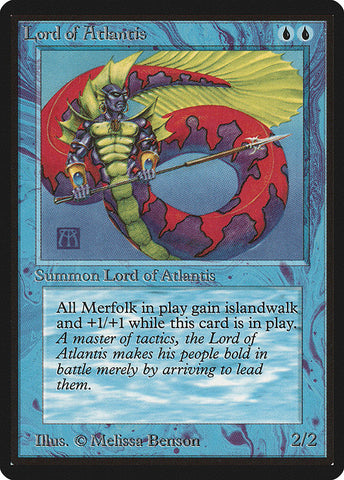

Lord of Atlantis, Zombie Master, and Goblin King all had some typal-matters things going on with their gameplay mechanics. Making them all have the Lord creature type was a clean way to indicate to players that these were typal-matters cards and reduce the number of disparate creature types in the game. Reducing the number of creature types in the game is a topic we will explore further a bit later.
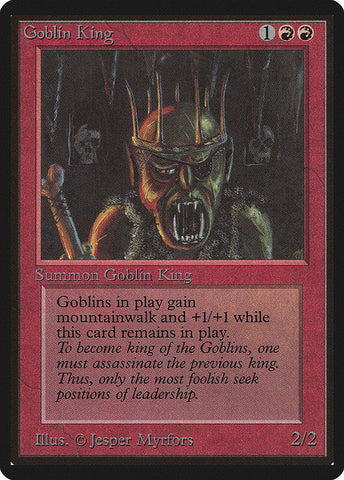

Of the Revised Lords the odd one out is Keldon Warlord. The Warlord has no typal-matters mechanics on it. As near as I can figure out, the only reason Keldon Warlord had the Lord creature type to begin with (it and Zombie Master were the first two), was because it had the word “lord” in its name. Keldon Warlord did set a precedent for another Lord card, which we will look at momentarily.
Lords appeared peppered throughout sets of the ‘90s and early 2000s. Some of them, like Ice Age’s Chaos Lord had little or nothing to do with the typal-matters theme established by the Revised Lords (Keldon Warlord being the exception).

Brief aside: A notable thing about all of Brian Snõddy’s pieces is how well he incorporates backgrounds into his illustrations. His Chaos Lord illustration does a fantastic job of highlighting the aforenamed Lord in the foreground while also showing the mighty horde under his command in the background. It’s details like that which elevate a piece, making it an immersive experience, and contributing to the world building of a set.
While Chaos Lord didn’t stick to the typal-matters theme, Mercadian Masques’ Caller of the Hunt is a different story.

Caller of the Hunt is an interesting riff on Keldon Warlord and the typal-matters Revised Lords. Where Warlord’s stats were equal to all creatures in play, the Caller’s ability is similar, but limited to only a specific creature type (chosen as the card enters the battlefield). In a way, this is almost a fixed version of Keldon Warlord, giving it a sort of typal-matters ability.
After Caller of the Hunt, a few years passed before any new Lords appeared in Magic. When they did, it was all in one set, in the largest concentration of the Lord creature type since Revised.
Onslaught (2003)
The Lord creature type returned in Onslaught with six new cards. It was the largest density of Lord creatures of any set in Magic’s history. The set had a typal-matters theme, making it the perfect place to bring back Lords. There was one for each color in the set—and an additional one for white—covering the main creature types present.
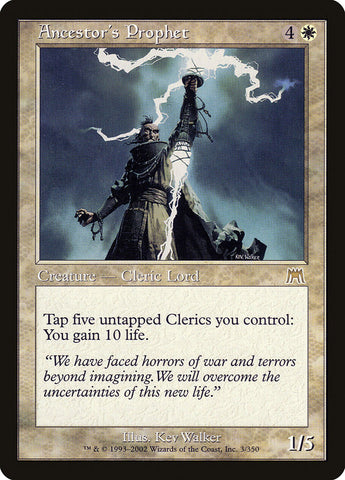
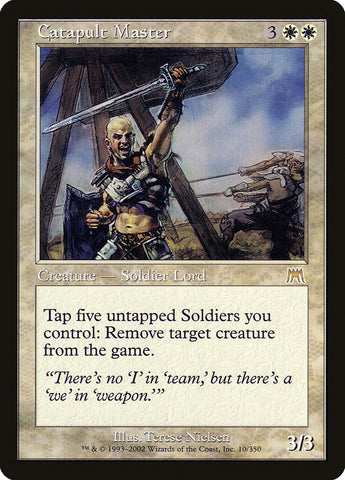

Rather than simply buffing their kindred like past typal-matters Lords, each of the Onslaught Lords had a powerful activated ability requiring five creatures of the same type to tap to activate (this could include the Lord itself and the ability dodged summoning sickness). This gave a whole new meaning to the idea of typal-matters cards. Their build-around nature made them great for Limited and casual Constructed play. Though they didn’t make much impact in competitive settings, they still see some play today in Commander.
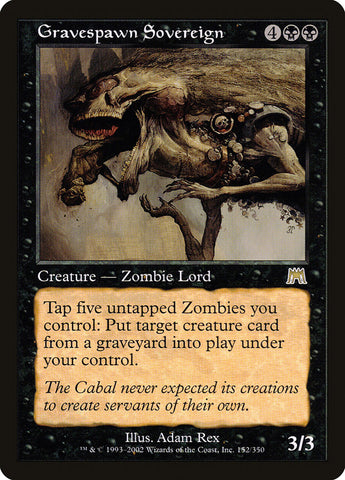

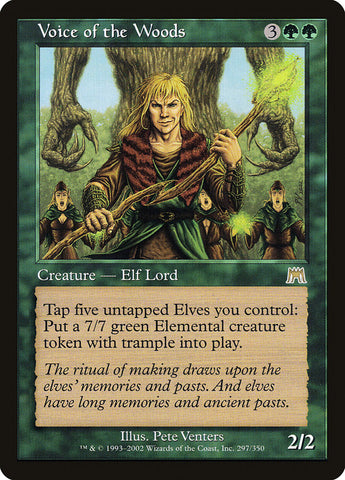
Visually, the illustrations of each of the Lord creatures in Onslaught did an excellent job of depicting them as leaders in positions of power, leading their kindred on the battlefield and elsewhere.
Death of the Lords
The Lord creature type was retired from Magic in 2007 along with 145 other creature types during one of the largest erratas to the game in its history, The Grand Creature Type Update. A whopping 1197 creatures had their creature types updated.
Though Lord is no longer an official creature type, thanks to the history and ubiquity of the Lord type in early Magic, particularly on Lord of Atlantis, the word “lord” is still part of the Magic lexicon. It refers to typal-matters creatures, particularly those that give stat boosts to their kindred. Valiant Veteran, for example, is a Soldier “lord,” one of five typal-matters “lords” from Dominaria United, and still in Standard at the time of this writing.
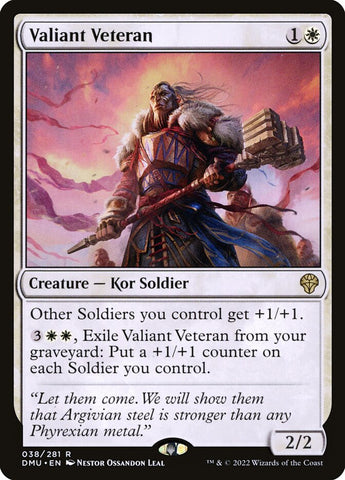
While not eliminated from Magic the way the Lord creature type has been, there is a third creature type that ranks 10 on the Beeble Scale and received new cards as recently as Commander 2019.
The Minions of Magic
Minion was a creature type appearing as early as Mirage. Servants of the Jamuraan vampire Shauku, Endbringer were the first to receive the type, depicted on the card Shauku’s Minion.

As with Shauku’s Minion, subsequent minion creatures were typically the lesser servants of the given big bad villain of a particular setting or story arc, though there were some prominent exceptions.
Urza’s Saga (1998)
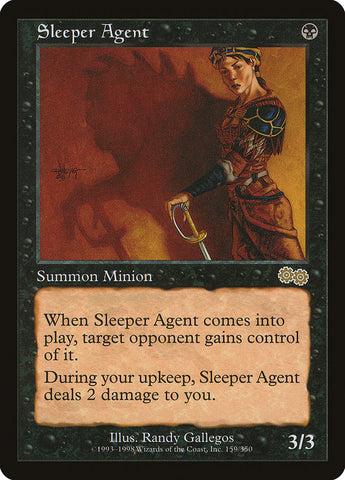
In the Urza’s Saga storyline, one of the prominent characters was the Phyrexian sleeper agent Xantcha, a Phyrexian rebel and companion of Urza. She is depicted on the card Sleeper Agent as a representative of the hundreds or thousands of such agents dispatched to the plane of Dominaria to spy for Phyrexia. She later received her own card in the Commander 2019 set, which marked the return of the Minion creature type after a roughly 15-year absence.
Odyssey (2001)
Odyssey had six Minion cards, the most of any set in the game’s history. The most important of these, and such a powerful card that it was banned in Commander, was Braids, Cabal Minion.

Braids was a powerful and mentally unstable dementia caster, a wizard with the ability to make her own nightmares manifest into physical form to fight for her. We can see from her expression in Eric Peterson’s illustration that things aren’t quite right for her, and the flavor text of the card reinforces the point.
Braids first gained notoriety as a pit fighter, for the Otarian Cabal on Dominaria. Her skills quickly caught the eye of the Cabal, who elevated her in their service and tasked her with important missions. She played a major part in the Otarian storyline, before succumbing to her own dementia. The story was vague on whether she died or remained trapped in a dimension manifested by her own mind but was finally clarified with her return as a nightmare being in the Dominaria United story line.
More Minion Madness
A total of 37 creatures originally carried the type of Minion. They acquired new friends like Lost Soul and Rag Man in Sixth and Seventh editions, respectively. Then, during the Grand Creature Type Update in 2007, three more creatures were updated to be Minions. Following those additions via errata, no new Minions entered Magic until the release of Commander 2019.
Commander 2019
After the Grand Creature Type Update, twelve years passed with no new Minions before Commander 2019 delivered three. They included the previously mentioned Xantcha, Sleeper Agent.

Mark Winters did an excellent job capturing the essence of Xantcha in his illustration of her. The card itself is a powerful upgrade of the original Sleeper Agent card, reflecting both Xantcha’s Legendary status, and more modern design parameters. Of the three new Minions introduced, the most powerful was not Xantcha, but another creature of Phyrexian origin.

As the son of Yawgmoth, K’rrik lives up to his father’s terrifying legacy. His card is insanely powerful, allowing you to cast all your black spells as though the black mana costs on them were Phyrexian mana. If that were not already enough, K’rrik also grows larger with each black spell you cast. There’s a reason K’rrik is a potent cEDH commander, and among the top 100 of all Commanders on EDHREC for the past two years. He allows for broken starts the moment he hits the battlefield if unanswered.
Chase Stone crafted a good illustration of the Horror Minion that is K’rrik. The Phyrexian body and humanoid face, combined with the ominous background, set a good tone. I wonder though if there wasn’t a way to have captured more of the card’s gameplay power in its illustration. The illustration is nowhere near as scary as the power of the card itself in terms of gameplay.
The End Step
I hope you enjoyed this dive into the three highest rated creature types on the Beeble Scale. Would you like to see a similar exploration of other levels of the Beeble Scale? Let me know what level of the Scale you’d want to see explored in comments or on Twitter. Join me next week when I travel to the Hurloon Mountains to tell the story of Magic’s first poster person.
Subscribe
Sign up to get the latest on sales, new releases and more …
